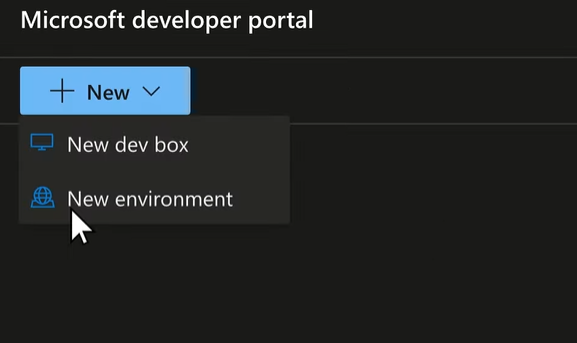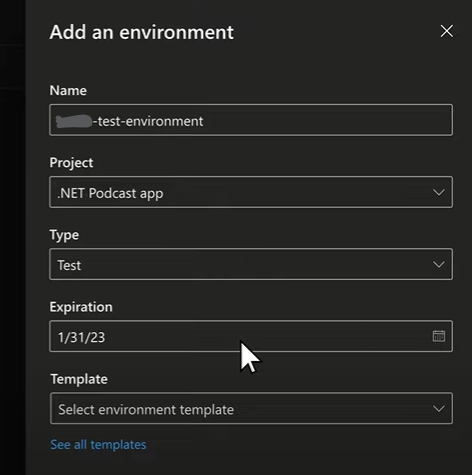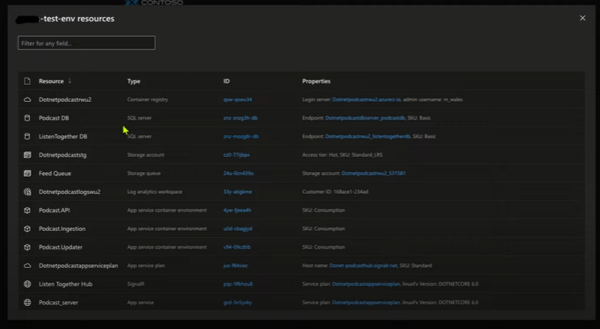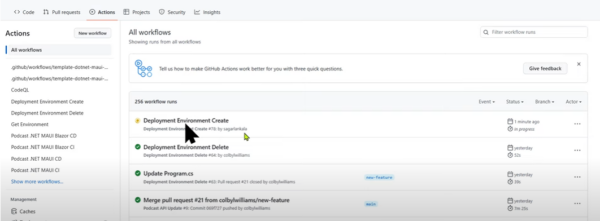Configuring and managing complex cloud environments can be time-consuming and take away valuable development time from developers. Microsoft recognizes this challenge and provides several services and tools to help streamline the process, allowing developers to focus on writing code. Azure is a cloud computing platform and service offered by Microsoft. It provides a wide range of services and tools enabling organizations to build, deploy, and manage various applications, services, and infrastructure in the cloud. Azure Deployment Environments is a service by Microsoft that allows development teams to create segregated instances within Azure for deploying and managing applications in different stages, such as development, testing, and production, to ensure controlled and consistent deployment processes.
Azure Deployment Environments
Azure Deployment Environments offer several benefits for creating, configuring, and managing cloud environments. Some of these benefits include:
- Standardization and collaboration: Azure Deployment Environments allow teams to capture and share Infrastructure as Code (IaC) templates in source control. This promotes standardization across different environments and enables collaboration among team members.
- Compliance and governance: Dev infra teams can easily manage and govern the environments created by dev teams using Azure Deployment Environments. This includes tracking security alerts, monitoring costs, and ensuring compliance across teams and organizations.
- Cost visibility and control: Azure Deployment Environments provide cost visibility and control by allowing dev infrastructure teams to track, manage, and monitor costs incurred per environment.
- Increased security and centralized control: Azure Deployment Environments eliminate redundant work for platform engineers and administrators by enabling self-service deployment for developers. They also provide centralized control over environments, ensuring they remain secure and cost-effective[.
- Agility and efficiency: Azure Deployment Environments enable developers to quickly spin up application infrastructure using project-based templates, establishing consistent best practices. This promotes agility, efficiency, and the ability to scale and deploy applications.
These benefits make Azure Deployment Environments a valuable tool for organizations looking to streamline and optimize their application deployment processes in the cloud. Developers can focus more on writing by standardizing infrastructure, ensuring compliance, controlling costs, and enabling collaboration.
How Azure Deployment Environments Works
With Azure, you deploy the right environment for the developer, and they start coding. Here we go through its working.
Step 1. In the developer portal, click on New and select New Environment.

Step 2. Enter basic details on the box that appears.

You can select the template, and you are going to make the environment. For example, select podcast as your template. And you can see the 12 resources that have been created.

As a dev, you need not want to provide any subscription or resource group details. All the information that you need is created in minutes. And all the resources are compliant with the enterprise security standards. So now you can test and develop without worries. Also, if needed, you can redeploy or delete the entire environment. That is, you and your enterprise team will have all the control.

In Github, create the branch as usual. In the workflow, you can see that Azure Deployment Environments are integrated into the git flow. The entire environment is going to be created as a part of your branch.

Also, it is going to create the app code for that environment, and you will get a custom Web App URL specific to you. Everything is managed from the code repository, where admins can control the type of environments that the dev can create. Admins can define different types of environments, dev, test, and production. They can control who can create and when. Also, admins can manage all managed identities, permissions, resources, and subscriptions.

The developers create the environment and the dev portal, CLI, or via git OPS. Development environments provide the ability to track, review and manage across sub-organizations and dev teams in one central place. This means you are tracking costs and security alerts with the right context.
Conclusion
Azure Deployment Environments provide organizations with a flexible and scalable way to manage different environments for application deployment. With the use of tools such as Azure Resource Manager, Azure Pipelines, and Azure DevTest Labs, organizations can automate and manage the deployment process while ensuring consistency and reducing risks.
Metclouds Technologies help you to streamline and optimize your application deployment processes in the cloud with Azure Deployment Environments.


